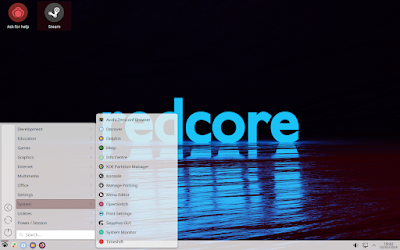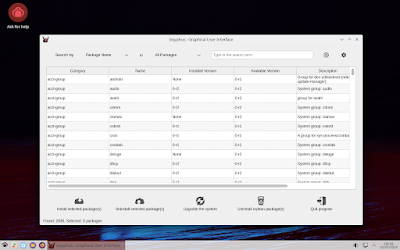🔴Redcore Linux: A Gentoo-Based Dynamo 🏍️
Introduction: Redcore Linux is a live installable rolling-release Linux distribution that's based on Gentoo Linux testing branch which uses a hardened profile by default. It is a fork and a continuation of, now defunct, Kogaion Linux. It was started and is currently developed by Ghiunhan Mamut. The latest release, codenamed Tarazed, continues the project’s tradition of naming each release after a constellation, star, planet, galaxy, nebulae, and such.
Unique Features: Redcore Linux does a decent job of offering the convenience of a live-installable distro such as Ubuntu, but with the robustness and malleability of Gentoo. The biggest regular-user centric feature in Redcore is the use of pre-compiled binary packages, unlike the source-based ones used in upstream Gentoo. A related notable characteristic of the distro is its rolling-release nature.
The distro offers a blend of useful and surprising applications out of the box. In addition to the Firefox web browser, Redcore offers a handful of other open source apps across all the usual desktop-centric categories such as Multimedia, Internet, Graphics, and more.
Package Managers: The three available package managers are Sisyphus (recommended), Portage and Flatpak. Sisyphus, the heart of Redcore's package management, has undergone a complete rewrite. This revamp has decoupled the backend from the frontend, leading to a cleaner API. Enhancements like improved package suggestions and better handling of similarly named packages.
Download: You can download Redcore Linux from one of the three mirrors based in the United States, Germany and Russia.
Live ISO passwords:-
Username : root with NO password && redcore with NO password.
Installation Tips: Redcore Linux strives to bridge the gap, by offering a graphical point-and-click installer that streamlines the process and makes it a whole lot easier. The distro-neutral Calamares installer quickly runs you through all the essential steps such as selecting the keyboard layout, timezone, user creation as well as partitioning.
Community: Interact with fellow Redcore Linux users in the Redcore Linux forum.
Comparison with Gentoo Linux and Pentoo Linux: When comparing Gentoo Linux vs Redcore Linux, the Slant community recommends Gentoo Linux for most people. The most important reason people chose Gentoo Linux is: You build the package from a source you can see and read. You decide which features you want to build in and which aren't needed. Redcore Linux, on the other hand, provides a more user-friendly experience with pre-compiled binary packages.
Pentoo Linux, like Redcore, is also a Gentoo-based distribution. It is one of the best Linux distributions for penetration testing. While Pentoo focuses on providing tools for penetration testing, Redcore aims to bring the power of Gentoo to the masses.
Conclusion: Redcore Linux is a powerful and user-friendly distribution that brings the robustness of Gentoo to a wider audience. It offers a unique blend of features and applications, making it a compelling choice for users seeking a high-performance and flexible Linux experience.
Disclaimer: This article is intended for informational purposes only. The Distrowrite Project makes no warranties about the completeness, reliability, and accuracy of this information. Any action you take upon the information on this article is strictly at your own risk, and we will not be liable for any losses and damages in connection with the use of our website.













Comments
Post a Comment
Hello and welcome to The Distrowrite Project! We appreciate your engagement and value diverse perspectives. Our community thrives on respectful and constructive discussions. Please ensure your comments align with our guidelines: no hate speech, personal attacks, or spam. Let us foster a positive environment where everyone feels comfortable to share their thoughts and insights. Kindly direct any complaints and suggestions for any software/hardware directly, clearly and politely to the respective developer(s). Thank you for being a part of our community!